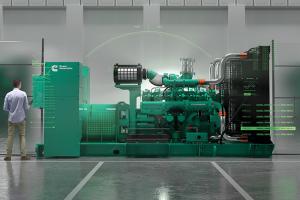Advanced access-control systems for health facilities
IN BRIEF |
| • Complying with health care regulations, such as HIPAA, is a growing driver for today’s access-control technologies. • Infection control plays a role in new technologies as health systems adopt systems that will reduce touch points. • Manufacturers are developing systems to meet a wide range of needs from small off-site facilities to multi-facility campuses. • Advances in information technology allow for better and easier integration of access control into building security systems. |
Access-control devices such as locks, entry devices and door alarms have evolved to meet the changing needs of hospitals in a world where the threat of terrorism is ever-present.
In addition to securing sensitive areas such as maternity wards, emergency departments and intensive care units, asset protection is a major concern for medical facilities, experts agree. Prescription medications, medical supplies and other high-value items are potential targets for theft and must be secured adequately.
While the overall demand is to keep a facility secure, other security demands are important as well. Complying with HIPAA requirements regarding the security of controlled substances, medications and pharmaceutical supplies is critical.
Also, access-control systems must function seamlessly in multidepartment and campus environments. Controlling segmented specialties, such as cardiac, research, emergency and maternity wards, is crucial because all departments have different needs and requirements. These same systems, however, must allow authorized staff to move freely and accommodate the many credentials needed by staff and volunteers.
No-touch access
Reducing “touch points” is one key aspect of improving security systems in hospitals, according to Steve Dentinger, vice president, electronic access control, Kaba Access and Data Systems Americas, Whitby, Ontario, Canada. “The use of door-opening technologies that do not require an individual to touch a door handle or crash bar can reduce the spread of germs. Door readers can read a credential, authenticate the user and open the door automatically.”
You may also like |
| 2012 Hospital Security Survey |
| What’s new in infant security technologies? |
| Hospital violence reduction strategies |
| |
Today’s hospital security encompasses many systems that work toward patient and staff safety, often on the backbone of their information technology (IT) infrastructure, he adds. “The ability for an access-control system to work with variables such as patient-wandering detection, infant-monitoring systems, and Internet Protocol (IP) and closed circuit television (CCTV) systems is no longer an option, but a necessity. Patient-wandering detection systems, for instance, are being integrated into access-control systems.”
While traditional access control advances at a rapid pace, the advantages of replacing mechanical key systems with intelligent keys is gaining momentum, according to Joseph G. Kingma, vice president, Medeco eCylinders, HSAM Special Projects, ASSA ABLOY High Security & Aftermarket Group, Salem, Va. “With a simple cylinder and key replacement, this technology eliminates the challenges and liability associated with lost keys, key duplication and poor record-keeping. In addition, it provides hospitals with the ability to audit and schedule keys without the cost and complexity that prohibit the use of traditional technology on all doors.”
Hospitals are requesting locking solutions that do not use electromagnetic locks, says Mark Berger, president and chief product officer, Securitech Group Inc., Maspeth, N.Y. “Users don’t want multiple appliances on doors, so the locks and trim must provide request-to-exit signals, door position information and latch position data, in addition to being released by the access-control or security system.”
Because creating a quiet health care environment is an important initiative within hospitals, development of quiet door hardware is an ongoing area of focus, according to Ann Timme, marketing manager for health care, Allegion, Carmel, Ind. Eliminating or reducing the noise associated with doors opening and closing tops the list.
Also, security devices must be 100 percent code-compliant. “One area of misunderstanding over the past several years is delayed versus controlled egress,” Timme says. “The International Building Code (IBC) has changed the terminology around these two actions several times over the past five years, which has caused confusion. Working with a manufacturer that has expertise in not only codes, but the ability to recommend the correct solutions to meet compliance issues is important.”
Accessing innovations
Among access-control systems recently introduced to the health care market is the KeyWatcher Touch solution from Morse Watchmans, Oxford, Conn. It allows hospitals to control access to keys and other high-value assets via tracking and reporting capabilities. The system generates reports that can be emailed automatically to authorized recipients, providing a complete audit trail that can be used to validate compliance with regulations. Notification alarms can be sent to an access-control or alarm panel.
“System administrators can schedule customized or standard reports for any frequency or for a specific time, and can view or run reports as needed,” says Fernando Pires, vice president of sales and marketing. “If a key or other asset housed within the cabinet becomes overdue for return, the system will notify the appropriate parties via email.”
Electric-release Control Trim products from Securitech allow health care facilities to install, or continue to use, any access control and keying system they prefer. This is because the brains of the access-control and key systems are tied into the electric release, not the lock itself. “They integrate seamlessly with IT-based locking systems, and stand-alone or network access-control systems. They can be released by any preferred system, including keys, card access, keypads, intercoms and push-buttons,” Berger explains.
Allegion has introduced the NDE Series wireless lock with ENGAGE technology from Schlage, which gives users the ability to see and manage who has access to areas where and when. Utilizing standard ND cylindrical door prep, the NDE can be installed in minutes with a Phillips screwdriver; there is no need to drill holes, install components or run wires to each opening, making it easier for hospitals to extend their use of access control.
Also, the Von Duprin Chexit delayed egress device from Allegion has been redesigned to adapt to a wide range of applications and code requirements. The system is suitable for protection against patient abduction or elopement, and frequently is used in maternity and pediatric units, behavioral health and memory care facilities, and skilled nursing and assisted living homes.
Keyscan Aurora access-control management software from Kaba Access and Data Systems Americas features a lockdown function, which allows hospitals to trigger a full or partial building lockdown at a moment’s notice. It also features support for up to 90,000 credentials, robust scheduling management, IP and CCTV camera integration, visitor management, active mapping and photo-badging.
Tim Shafer, sales and marketing manager for Detex Corp., New Braunfels, Texas, sees a growing demand for delayed egress on garden gates and perimeter areas within health care facilities. In response, the company’s AT-5200 tailgate-detection system assures that only one individual can enter a secured doorway for each authorized card read. Compatible with most card reader technologies, the AT-5200 is easy to retrofit and uses infrared sensor beams to detect tailgating.
In a similar vein, Dortronics Systems Inc., Sag Harbor, N.Y., manufactures 1107xEDR locks, which are used with its 7101-P controller for delayed egress situations. The system limits access and controls movement of patients and their visitors while giving medical staff free access.
“Also, psychiatric care facilities are beefing up security to better secure patients by using 1,500-lb. maglocks and mantraps to limit escapes and wandering,” says Bryan Sanderford, national sales manager. “The Dortronics 7600 series of annunciators has been used successfully to monitor these controlled areas.”
More and more, manufacturers are working with hospital IT staff when installing security devices. Given the industry’s move toward IP-based systems, working more closely with IT staff has become the norm. “Technological developments have made it possible to more easily integrate key control as part of a facility’s networked security system. With open protocols, access control systems can be connected via RS-232 or networked via Ethernet to form a fully integrated security solution,” Pires notes.
“Because of the trend to integrate locking systems with access control, identity and visitor management systems, our products are increasingly being controlled by, and [we are] providing information to, these higher-level enterprise systems through IT networks,” Berger explains. “We design our products for easy installation and integration by hospital IT staff.”
The newest access-control systems also accommodate a wide range of building sizes and, thus, meet the security needs of smaller, off-site health care facilities.
“One major challenge of satellite locations is the need to keep security infrastructure simple and affordable and, in many cases, portable since the locations may be leased,” says Kingma. “New intelligent key systems provide a balance of security and flexibility. In addition, these products enhance accountability with their ability to audit both the key and the locking cylinder itself.”
In the cards
Manufacturers agree that there is increased demand for smart cards and multitechnology card readers by hospitals. The newest devices provide increased efficiency to hospitals. Smart cards are very difficult, if not impossible, to duplicate. Timme says the benefits of using smart credentials are overwhelming. “A single credential is more convenient for staff to use with multiple applications. Also, improved security of data exchanges protects the information.”
However, infection control precautions and overall security strategy must be considered before selecting a card technology and supporting readers, says Timur Kupa, national program manager for intelligent infrastructure solutions, Siemens Building Technologies Division, Buffalo Grove, Ill. “For example, if a facility plans to use smart cards and readers for the new generation of visitor management technology, the cards must be disposed of or disinfected after use, which can be costly. While smart access cards for employees are a good choice, an alternative means of access-control credentials needs to be considered for both patients and visitors, such as disposable paper badges with printed barcode.”
Kupa says the latest trend is toward smart mobile devices being used for access control, which will become more prominent over the next five years. “Thus, facilities managers should plan on deploying technology that is future-proof or can be upgraded without a major cost impact.”
The latest access-control devices are able to collect and manage data as well. “In the case of intelligent key systems, data are collected in both the cylinder and the key. Because access rights expire on the key at regular intervals, the key holder simply visits a programming station, which revalidates access for the next period and pulls the audit data from the key,” says Kingma. “These data are stored in a central database, available for managers to review and adjust policies.”
In addition, the Medeco XT intelligent key platform from ASSA ABLOY provides an intuitive visual interface, which deciphers the large amounts of data into easy-to-understand graphs and charts that allow the user to quickly identify security or key holder policy risks.
Looking toward the near future, makers of security devices expect to see more mobile access control, along with fast-advancing technologies like facial recognition.
Neal Lorenzi is a freelance writer based in Mundelein, Ill.
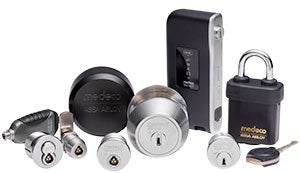 | Smart solutionIntelligent key systems provide controlled access, accountability, physical security and system management. |
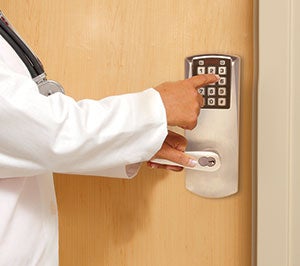 | Wireless controlPowerPlex self-powered lock has no batteries and no wires for a simple, low-maintenance, non-networked door solution. |
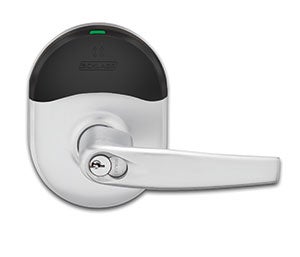 | Time and locationSchlage NDE wireless locks with ENGAGE technology give users the ability to see and manage who has access where and when. |
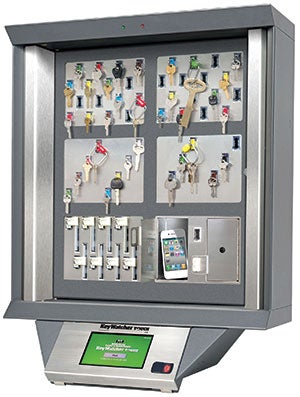 | Full pictureThe KeyWatcher Touch system allows hospitals to control access to keys and other high-value assets via tracking and reporting capabilities. |
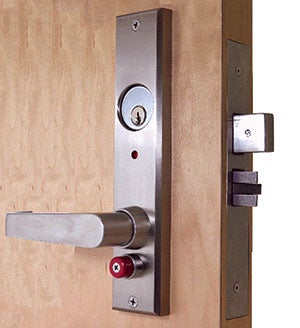 | Key pointsLexi electric release control trims can be installed on existing doors and can be unlocked by lever, key, card access, keypad, intercom, push button or other release. |
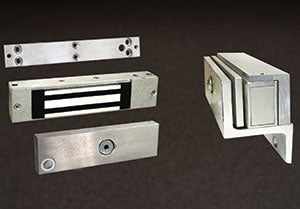 | Limited access1107xEDR locks are designed to limit access of patients and their visitors without limiting access by medical staff. |
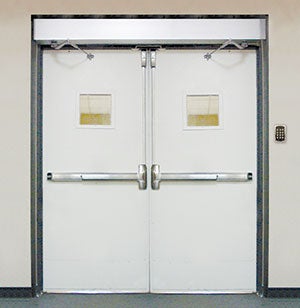 | Secured exitThe Security Swing Door is designed to prevent egress violations. |


